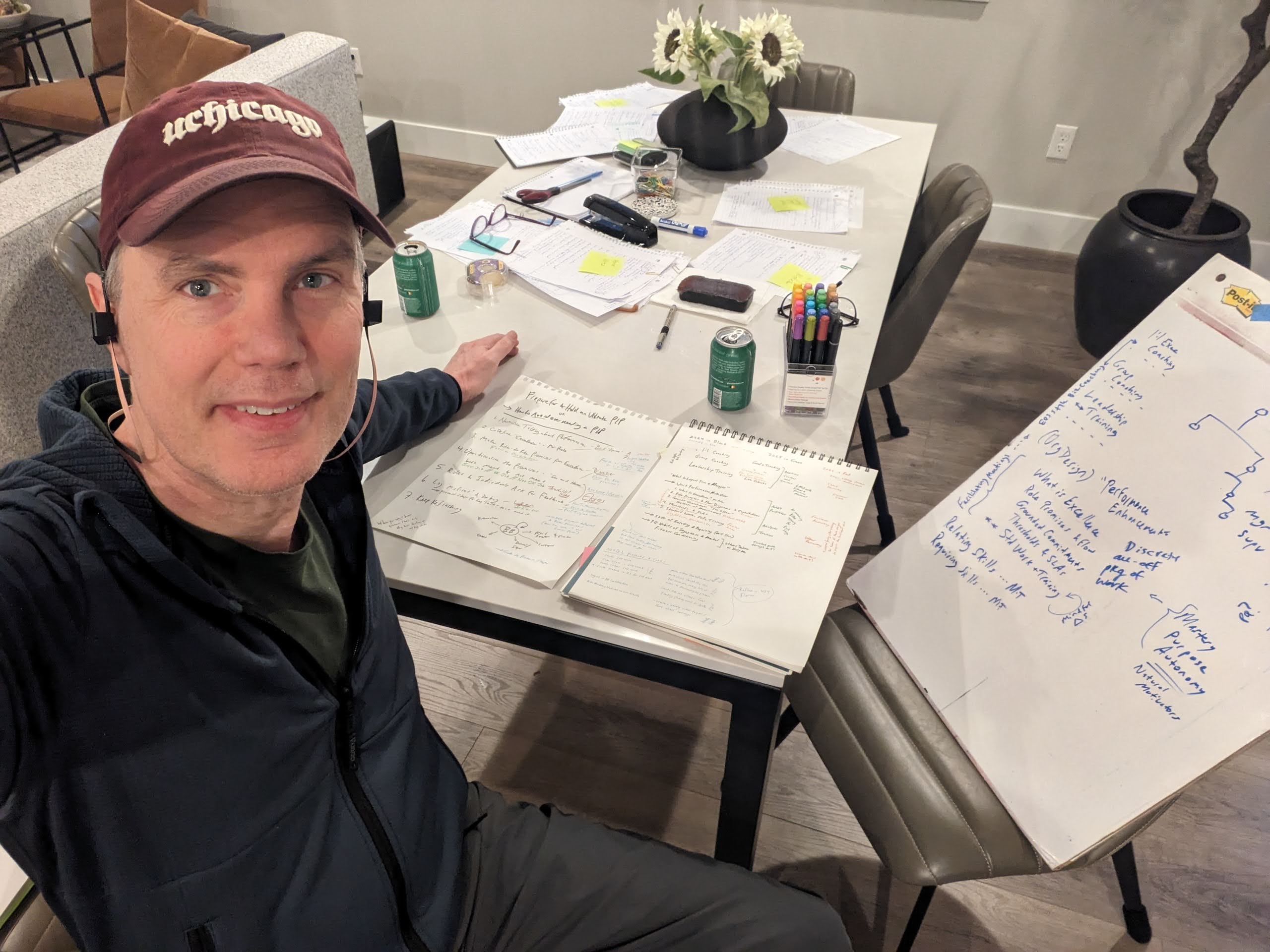How to Use Assumptive Goal Setting
Setting good goals is awesome — it can energize you and your team to achieve great things.
One of the hardest parts of goal setting is overcoming your own, and your team’s, fears and internal limitations.
One simple mental trick lets you set powerful yet realistic goals — without being hobbled by fear, and without being Pollyanna-ish or unrealistic.
What Assumptive Goal Setting Gives You
With Assumptive Goal Setting, you’ll end up with very ambitious goals that are also realistic, and that your team will buy into.
Why Use Assumptive Goal Setting?
With classic goal setting, you start where you are and try to figure out where you’re going. This amplifies the unknowns, and the fear of those unknowns.
If you’ve ever seen a leader try to get a team to set an ambitious goal, and watched the team resist and complain and doubt, you’ve seen this dynamic.
Suppose a leader wants you and your team to double sales next year. “What?” they cry. “How can we possibly do that!? We did our best this year and barely managed the results we got. Doubling is absurd! It’s a setup for failure, and will just make everyone feel bad. There are a thousand reasons it will never work.”
Classic goal setting will tend to keep you very close to your current performance.
How Assumptive Goal Setting Works
Assumptive Goal Setting unfolds in these phases:
- Set an ambitous goal
- Pretend you’re already in the future
- Assume you’ve already achieved the goal
- Ask “what must have happened?”
Here’s how it sounds.
Pretend you’re already in the future
You’ve already decided on your team’s goal. You say, “Everyone, please imagine it’s one year from now.” (Or whatever your planning timeframe is.) Name the date — if today is June 20, 2016, then say “Imagine it’s June 20, 2017.”
Assume you’ve already achieved the goal
Next, say “Furthermore, I want you to see us all celebrating something amazing. We doubled our sales. We actually, truly did it. We’ve got streamers decorating the office, and the big boss flew in to congratulate us and give us all letters of appreciation. The customers are thrilled. Can everyone imagine this?”
Ask “what must have happened?”
Now you say, “Grab some paper and start writing. Answer this question. Given that we doubled sales, what must have happened? What are some of the things that must have gone right, what breakthroughs must have occurred, what breaks did we get, to double sales? Write as many ideas as you can. Go.”
Then give everyone as much time as they need to write as much as they can write. You need to write also — lead by example — while monitoring the room.
Pull it Together
Now you gather everyone’s ideas onto a flip chart or white board, merging similar ideas, and arranging ideas by theme.
They’ll say things like, “We must have added an outside manufacturer to keep up with the increased demand,” or “We must have finally stopped bickering with marketing and worked smoothly together,” or “We must have dramatically increased the quality and quantity of our leads.” (For this last one, drill into further ideas on how that might have happened.)
This list becomes a great starting point for a detailed plan to, you guessed it, achieve the goal.
Why does it Work?
This technique works absurdly well, by taking away fear. When faced with “you have to double sales next year!” we get scared. We don’t know how to do it, we’re afraid to get in trouble, and we don’t want someone else setting us up to fail.
Yet when faced with “this already happened; how did it happen?” people react completely differently. There’s no fear. There’s curiosity and creativity. All the obstacles we can think of are still there, but in the ‘flipped’ form — they must have been overcome. And often we’ll say exactly how those obstacles got overcome.
This also works solo. Set your own goal for yourself using the Assumptive Goal Setting method and see.
Try it with your team or yourself, and tell me how it worked for you.
(Thanks to the wonderful folks at Manager Tools for inspiring my use of this technique, via this podcast.)

 By
By


